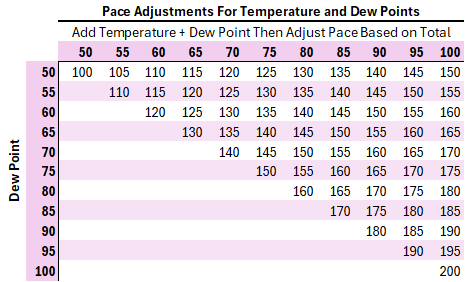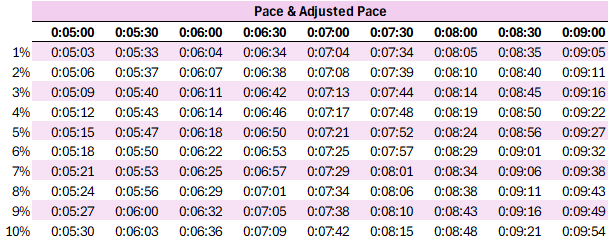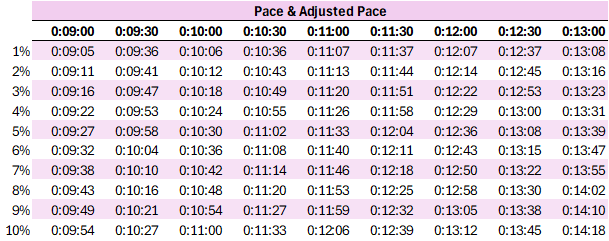When talking about summer running and training paces, it’s important to understand the difference between humidity and dew point, as well as how summer weather has an impact on running performance.
Relative humidity is how much water vapor is in the air compared to how much it can hold – it is expressed as a percentage.
Unlike humidity, dew point is an absolute measure, not relative, of how much moisture is in the air.
The dew point tells you how much moisture is in the air which easily translates into how it’ll FEEL outside.
Sweating is how your body naturally cools itself. But in order for you to cool down the sweat has to evaporate. The more moisture that is in the air the less the sweat is able to evaporate.
If you were to run the SAME paces as a cooler day, you would be working HARDER using MORE effort to maintain those paces.
Running with warmer temps and higher dew points means you need to ADJUST your paces to prevent overworking and overheating.
Here’s how to adjust your paces:
Find your number in the table below based on your temperature (Fahrenheit) and dew point.

Then match your number to the number below to find your % adjustment.
100 or less: no pace adjustment
101 to 110: 0% to 0.5% pace adjustment
111 to 120: 0.5% to 1.0% pace adjustment
121 to 130: 1.0% to 2.0% pace adjustment
131 to 140: 2.0% to 3.0% pace adjustment
141 to 150: 3.0% to 4.5% pace adjustment
151 to 160: 4.5% to 6.0% pace adjustment
161 to 170: 6.0% to 8.0% pace adjustment
171 to 180: 8.0% to 10.0% pace adjustment
Above 180: hard running not recommended
Once you have this % adjustment, use it to find your pace adjustment in the tables below:


Remember, you are NOT out of shape. It is a fact that it is harder to run as the temperatures and dew point increase. Your body is working harder.
Slow down your easy runs, adjust your workout and race paces, bring water along with electrolytes, make sure to hydrate before and after your runs, bring fuel with you, wear light colors, run in the shade, and be smart about it!




